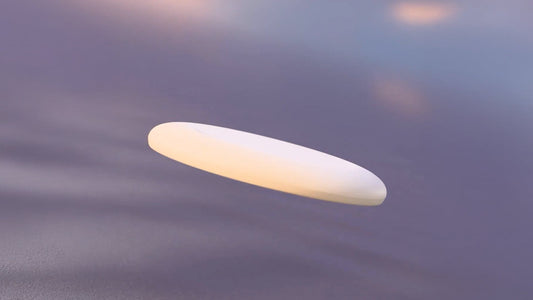At Milan Design Week 2025, FOOTLOOP captured attention as more than an installation, it was a vision of what the future of footwear could look like.
Developed through a three-way collaboration between Moon Rabbit Lab - specialists in computational design and digital fabrication, framas - a global leader in footwear tooling and component manufacturing, and Balena - a material science company pioneering circular, compostable materials, the project set out to challenge the norms of shoe design, production, and end-of-life.
Bringing together parametric design, additive manufacturing, and circular material innovation, the team created a fully modular, mono-material shoe, engineered for performance, repairability, and biodegradability.
What is FOOTLOOP?
FOOTLOOP is a fully modular, mono-material shoe system, built using Balena’s compostable BioCir® material and designed to perform through both 3D printing and injection molding. The concept was guided by three core principles:
- Modularity: Components can be replaced, repaired, or disassembled without adhesives.
- Materiality: A single circular material is used throughout.
-
Movement: The shoe is engineered for comfort, flexibility, and real-world performance.
The result is a shoe that redefines how we make, use, and unmake footwear, pushing the boundaries of both design and sustainability.
Designing with Systems in Mind: Moon Rabbit Lab’s Approach
As experts in computational design and digital fabrication, Moon Rabbit Lab approached FOOTLOOP not as a finished product, but as a living system, one that could adapt, move, and return to nature without leaving waste behind.
“We saw FOOTLOOP as an opportunity to redesign footwear from the inside out,” they shared. “Rather than layering materials or bonding incompatible parts, we focused on using a single compostable polymer, Balena’s BioCir®, to create a fully modular, multi-component shoe.”
Moon Rabbit’s design process was rooted in biomimicry and systems thinking. Drawing inspiration from natural structures, leaves, shells, and branches, they used computational tools to create geometries that were lightweight, flexible, and strong. Each part was optimized for performance through virtual simulations before being physically prototyped.
“We built digital twins for every component,” they explained. “That allowed us to run simulations, tweak performance variables, and test tolerances long before printing a single part. The material wasn’t just a passive input, it actively influenced the form.”
Working with BioCir® demanded experimentation. The team spent weeks refining print parameters, adjusting temperatures, speeds, and infill patterns, to unlock the material’s full potential. But once optimized, the material surprised them.“It became part of our aesthetic vocabulary. Its flow, adhesion, and softness guided us toward more organic, responsive forms. You’re not just designing for function—you’re designing in conversation with the material.”
Moon Rabbit sees FOOTLOOP as a blueprint for future-forward design: data-driven, nature-inspired, and materially responsible. “In the design world, we talk a lot about sustainability,” they said. “But real change happens when materials, tools, and thinking evolve together. That’s what FOOTLOOP is about, rethinking the system, not just the shoe.”
Manufacturing Innovation with framas
Known for their leadership in footwear tooling and component manufacturing, framas played a crucial role in translating design ambition into physical function. Their core challenge was to integrate a 3D-printed upper and sole both produced with Balena’s BioCir® with an injection-molded outsole, all without adhesives or chemical bonding.
“We had to fundamentally rethink how a shoe is constructed,” the framas team shared. “Instead of gluing or fusing components, we designed them to lock together mechanically. This required going back to traditional shoemaking methods pre-industrial construction techniques where craftsmanship drove function.”
This mechanical interlocking system not only supports disassembly and repair but also enhances circularity by eliminating composite waste. Every connection is intentional and reversible. From a manufacturing standpoint, framas also validated BioCir® across two major platforms:
- In injection molding, the material is handled similarly to thermoplastic polyurethane (TPU), making it easy to integrate into existing production lines.
- In FDM 3D printing, however, success depended on detailed parameter calibration,highlighting both the challenges and the opportunities of working with innovative circular materials.
Their experience proved a key point: BioCir® is more than a concept material, it’s production-ready, provided that design and manufacturing teams are aligned.
framas sees FOOTLOOP as a window into what the next generation of footwear can look like, where sustainability, performance, and manufacturability aren’t at odds but built into the same loop. “Circularity must extend beyond recyclability,” they noted. “When you design for disassembly, compostability, and modular repair, you’re not just reducing waste, you’re giving control back to both the manufacturer and the consumer.”
Balena’s Material at the Core
At the heart of FOOTLOOP is Balena’s BioCir®, a flexible, compostable, and bio-based material designed for circularity without compromising performance. Unlike traditional polymers, BioCir® is engineered to meet the demands of industrial manufacturing while enabling multiple end-of-life pathways from recycling to composting.
What set this project apart was the ability to apply the same material across both additive and conventional production processes. Whether in filament or pellet form, BioCir® offered the durability, elasticity, and processability required to prototype, refine, and ultimately manufacture a fully modular shoe.
More than just a sustainable option, BioCir® acted as the connective tissue across partners enabling a shared design language and a seamless transition between digital concepts and physical outcomes.
Balena’s role wasn’t just to supply material, but to enable the possibility of unlocking a future where materials adapt to systems, not the other way around.
A New Loop for Footwear
FOOTLOOP is more than a shoe, it's a statement. It challenges the footwear industry to think beyond products and toward systems. From computational modeling and modular design to bio-based materials and regenerative end-of-life strategies, it shows what’s possible when collaboration replaces compromise.
Balena is proud to have contributed the foundational material that made this vision possible and deeply grateful to our partners at Moon Rabbit Lab and framas for bringing their expertise, creativity, and craft to every step of the process.
Together, we didn’t just create a shoe. We created a new way forward.
 "
"


